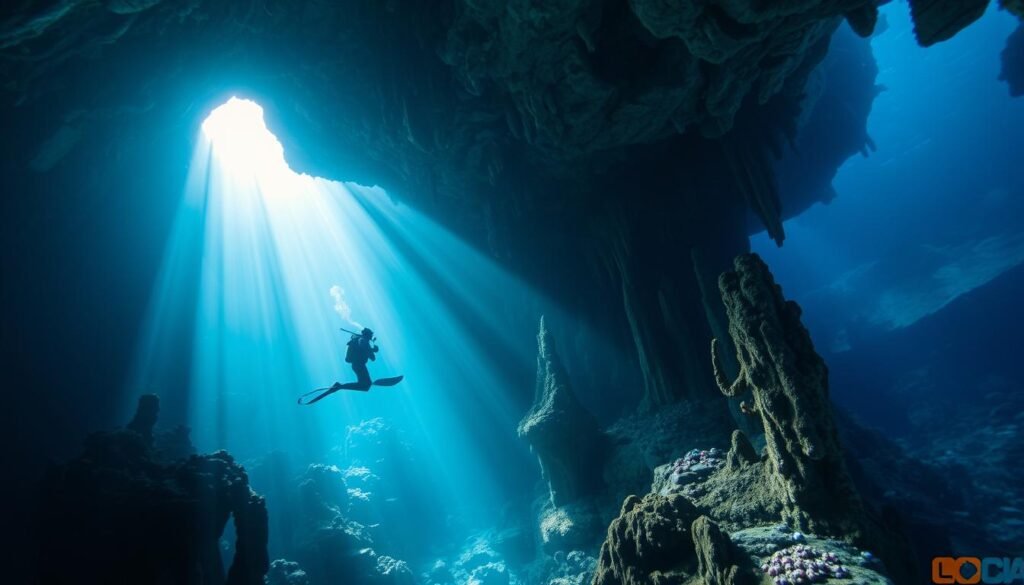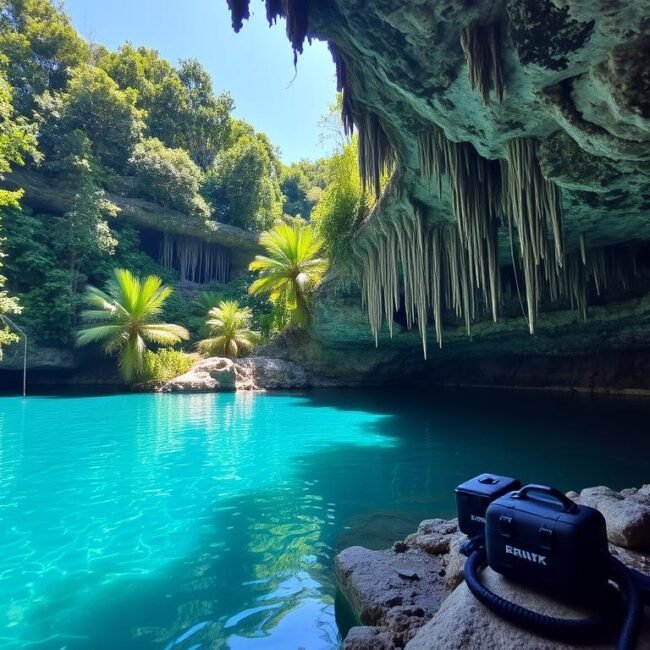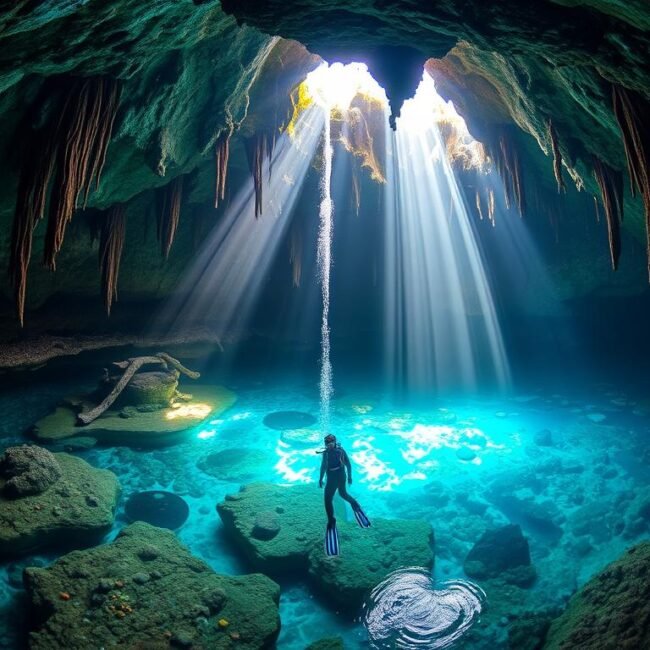Introduction
Ever dreamed of exploring Mexico’s underwater caves? 🌊 You’re not alone! Mexico boasts some of the most stunning and challenging cave diving spots in the world. Whether you’re a seasoned diver or new to cave exploration, it’s crucial to prepare well with essential safety tips for cave diving in Mexico.
Trust me, I’ve had my share of adventures and mishaps down there! To make your cave diving experience safe and unforgettable, here’s what you need to know. Grab your gear, and let’s get started!
Preparing for Cave Diving in Mexico
Researching Dive Sites
Before you dive into the depths, do your homework first. Each cave in Mexico has its own unique vibe and challenges. My first trip to Sistema Dos Ojos was breathtaking but different from what I expected.
Understanding the specific characteristics of each dive site is crucial. Some caves are narrow and maze-like, while others open up into vast underwater chambers. Check out dive logs, talk to local divers, and maybe even join a guided tour initially.
Knowing the layout, depth, and potential hazards of your chosen site can save you from a lot of headaches down the line.
Physical Fitness
Cave diving isn’t just about knowing your way around underwater passages. It’s also about being in top physical shape. I learned this the hard way when I underestimated the stamina needed for a long dive.
Way too early, I found myself gasping for air. Regular swimming, strength training, and cardio workouts can make a huge difference. Being physically fit helps you handle the demanding conditions.
It makes carrying your gear effortless and staying calm when things get tricky. Trust me, your body will thank you when you’re navigating those tight spots and managing your equipment with ease.
Mental Preparation
Let’s be real—cave diving is as tough on your mind as it is on your body. The dark, tight spaces and the need to stay alert all the time can be overwhelming. Before my first deep dive, I felt a mix of excitement and nerves.
Building the right mindset is key. Practice mindfulness, work on solving problems quickly, and keep a positive outlook. Being mentally strong helps you stay calm and make fast, clear decisions if trouble arises. Visualizing yourself successfully navigating the cave can also help.
Permits and Regulations
Navigating the legal side of things can be a bit of a maze, but it’s crucial for a smooth dive experience. Mexico has specific permits and regulations for cave diving. These rules protect both divers and the natural environment.
I once skipped a permit step and faced some unexpected fines—lesson learned! Make sure you research the required permits for your chosen dive site. Understand the local regulations and comply with all legal requirements.
This not only keeps you on the right side of the law but also helps preserve these incredible underwater worlds for future generations.
Essential Gear and Equipment
Specialized Dive Gear
For cave diving, regular scuba gear won’t do. You need special equipment for underwater caves. This includes a dive computer, a reliable regulator, and a full-face mask for better communication and visibility.
I remember using a rebreather system for the first time—it was a game-changer! The right gear is crucial for navigating and surviving in caves. Don’t compromise on quality; your gear is your lifeline.
Redundant Systems
“Don’t put all your eggs in one basket” is wise in cave diving. You need backup systems to prevent failures. This means having redundant air sources, extra tanks, and backup lights.
I once had a flashlight fail mid-dive, but my backup worked just in time. Redundancy adds safety, helping you manage unexpected equipment failures calmly. Always check your backups before diving—it’s worth it.
Lighting Solutions
Lighting is key in cave diving. Without it, navigating dark passages is impossible. I’ve dived with poor lights before—it was like stumbling in the dark!
Invest in high-quality, reliable lights with various beam settings. Some divers use both a primary and backup light for full visibility. Remember to protect your lights and carry extra batteries. Good lighting enhances both safety and the beauty of underwater caves.
Communication Devices
Staying connected underwater is crucial for safety and coordination. Tools like dive reels with line markers or electronic systems are vital. I once got lost in a cave system, and a communication device would have helped me find my buddy.
These devices keep you in touch with your dive partners, share important info, and signal for help if needed. Reliable communication gear boosts both safety and your diving experience.
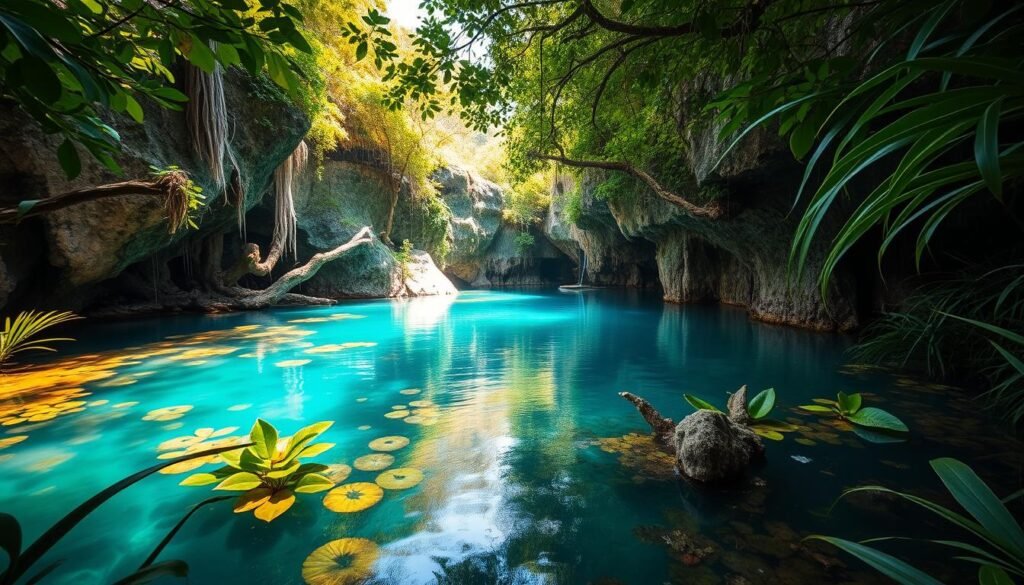
Navigation Techniques for Cave Dives
Using Guide Lines
Guide lines are essential in cave dives. They help you find your way back. It’s vital to lay a good guideline before diving deeper.
Use a reel to extend your line and mark important points. This method helps in navigation and prevents getting lost. Always watch your guideline and keep it untangled.
Compass Skills
A compass is key in cave diving. It helps you avoid getting lost. I once got lost without my compass, but luckily, I had it.
Practice using your compass to take bearings and follow directions. Use it with your guideline for better navigation. Having multiple ways to find your way is crucial.
Natural Landmarks
Natural landmarks are also useful for navigation. Remembering unique rock formations or passageways helps. I use these to check if I’m on the right path.
Take note of these features before diving deeper. They act as mental maps, guiding you through the underwater maze.
Mapping and Planning
Having a detailed dive plan is essential. Map out your route and note key points and hazards. Without a plan, I got lost once—it was stressful.
A good plan helps you stay organized and manage your time and air. Stick to your plan but be ready to adapt if needed.
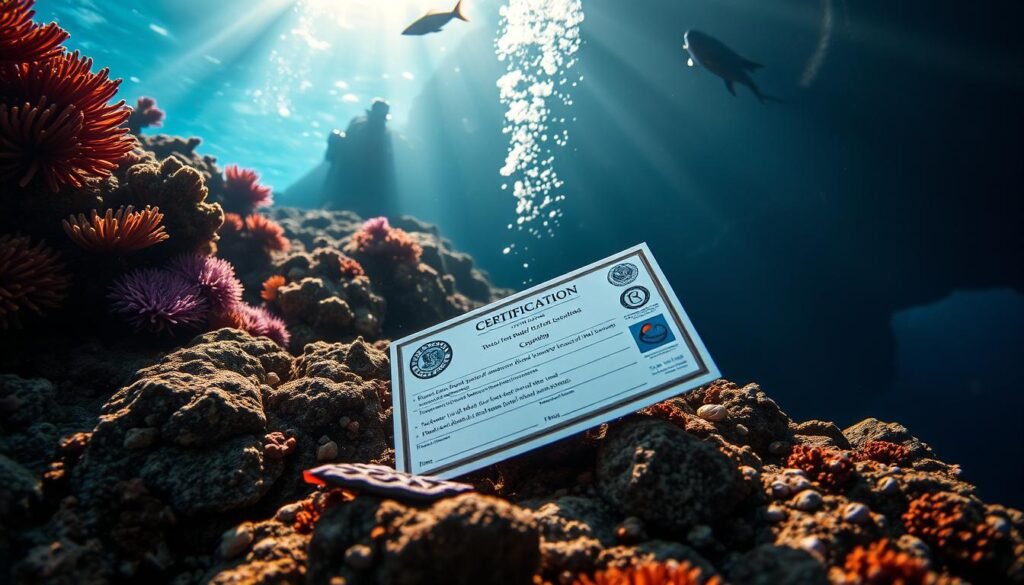
Understanding and Managing Risks
Identifying Potential Hazards
Cave diving has its dangers. Recognizing hazards like low visibility and equipment failures is key. I once had to navigate a tight squeeze carefully.
By knowing these hazards, you can prepare and handle them. Always assess risks before diving and stay alert during your exploration.
Gas Management
Managing your gas is critical to avoid running out. I once underestimated my air and had to cut my dive short. Plan your gas usage carefully and monitor it closely.
Carry enough air for the dive and have a safety margin. Using redundant gas systems adds security. Running out of air underwater is a risk you can’t take.
Decompression Sickness Prevention
Decompression sickness (DCS) is a serious risk in diving. I’ve heard of divers getting DCS after deep dives. To avoid it, follow safe ascent rates and make decompression stops.
Use dive tables or a reliable dive computer. Stay hydrated and avoid strenuous activity before and after diving. If you feel DCS symptoms, get medical help right away. Prevention is about careful planning and disciplined execution.
Emergency Situations
Emergencies can still happen, even with good preparation. Having a solid plan for unexpected events is key. I’ve found that quick thinking and calm responses can make a big difference.
Knowing emergency procedures and practicing rescue techniques is important. Make sure you and your dive buddies are trained for different scenarios. Carry essential emergency gear, like cutting tools and first aid kits, as they can be lifesaving.
Always communicate your emergency plan before each dive. Stay prepared to act quickly if something goes wrong.
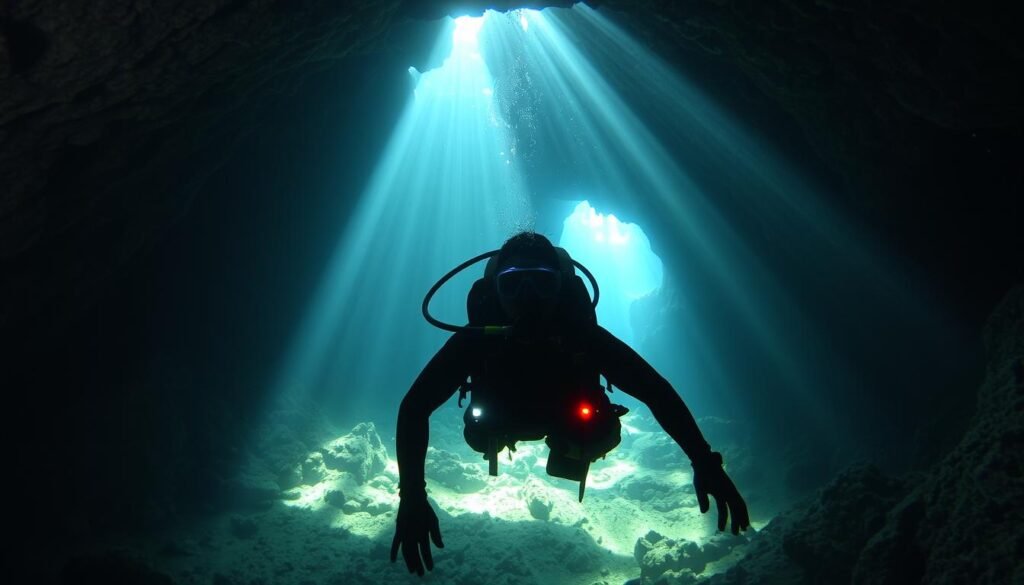
Environmental Considerations and Conservation
Respecting the Ecosystem
Diving into Mexico’s stunning underwater caves is like stepping into another world. It’s super important to treat it with respect. I remember my first dive in a pristine cave and realized how fragile the ecosystem is.
Best practices include avoiding touching or disturbing formations and maintaining buoyancy to prevent accidental bumps. Always follow the “leave no trace” principle—whatever you bring in, take out with you. It’s not just about preserving the beauty for yourself but ensuring these magical places remain intact for future divers and the wildlife that call them home.
Waste Management
Proper waste management underwater is a big deal. I’ve seen some divers leave behind gear or litter, and it’s heartbreaking. Always make sure you dispose of your equipment and any waste materials responsibly.
Use designated disposal areas if available, and never leave anything behind. Carry a small bag for collecting any trash you encounter during your dive. This not only keeps the caves clean but also protects the delicate formations and marine life from unnecessary harm. Trust me, it feels great knowing you’ve done your part to keep these environments pristine.
Wildlife Interaction
Cave-dwelling species are unique and often delicate. When observing wildlife, keep a safe distance and avoid making sudden movements that could startle them. I once got too close to a blind shrimp and accidentally scared it away.
It’s crucial to understand that these creatures are adapted to their environment and can be easily stressed by human presence. Use your camera sparingly and avoid using flashlights that can disrupt their natural behaviors. Respect their space, and you’ll have the chance to witness some incredible sights without causing any harm.
Sustainable Diving Practices
Promoting long-term conservation through responsible diving practices is something every cave diver should strive for. This means supporting local conservation efforts, participating in cleanup dives, and advocating for the protection of these underwater treasures. I joined a local group that organizes regular cleanups, and it’s amazing how much of a difference we can make together.
Sustainable diving also involves educating yourself and others about the importance of these ecosystems and encouraging fellow divers to adopt eco-friendly habits. By taking these steps, we help ensure that Mexico’s underwater caves remain vibrant and healthy for generations to come.
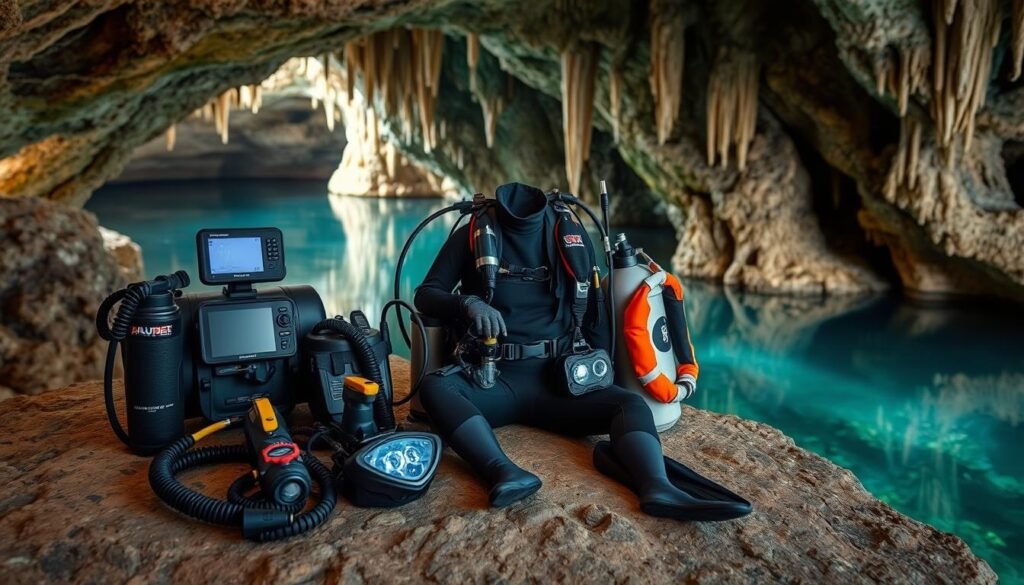
Training and Certification Requirements
Certified Courses
Taking certified cave diving courses is non-negotiable if you want to dive safely and confidently. I remember my first certification course—it was intense but incredibly rewarding. Completing a recognized cave diving training program teaches you the essential skills and safety protocols needed for this specialized activity.
Look for courses offered by reputable organizations like the Professional Association of Diving Instructors (PADI) or the National Association for Cave Diving (NACD). These programs cover everything from equipment handling to emergency procedures, ensuring you’re well-prepared for the challenges of cave diving.
Skill Development
Mastering key skills is crucial for every cave diver. This includes advanced buoyancy control, precise navigation, and effective gas management. I spent countless hours practicing my buoyancy until I could glide effortlessly through narrow passages.
Developing strong teamwork and communication skills with your dive buddy is also important. Regularly practicing these skills in controlled environments helps build muscle memory and confidence. This way, when you’re deep in a cave, you can rely on your training to navigate safely and efficiently.
Continuing Education
The world of cave diving is always evolving. Staying updated with the latest safety techniques and knowledge is essential. I make it a point to attend workshops and refresher courses regularly.
Continuing education helps you stay informed about new equipment, advanced diving techniques, and emerging best practices. It’s also a great way to connect with other divers and share experiences. Whether it’s learning about the latest dive computer technology or new emergency protocols, ongoing education ensures you remain a competent and safe diver.
Choosing the Right Instructor
Selecting a qualified and experienced training provider is key. I can’t stress enough how important it is to choose an instructor who not only has the right certifications but also a passion for teaching and a deep understanding of cave diving. Look for instructors with extensive cave diving experience and positive reviews from past students.
Don’t hesitate to ask about their training methods and dive philosophies to ensure they align with your learning style. A great instructor will provide personalized guidance, support, and mentorship, helping you become a skilled and confident cave diver.
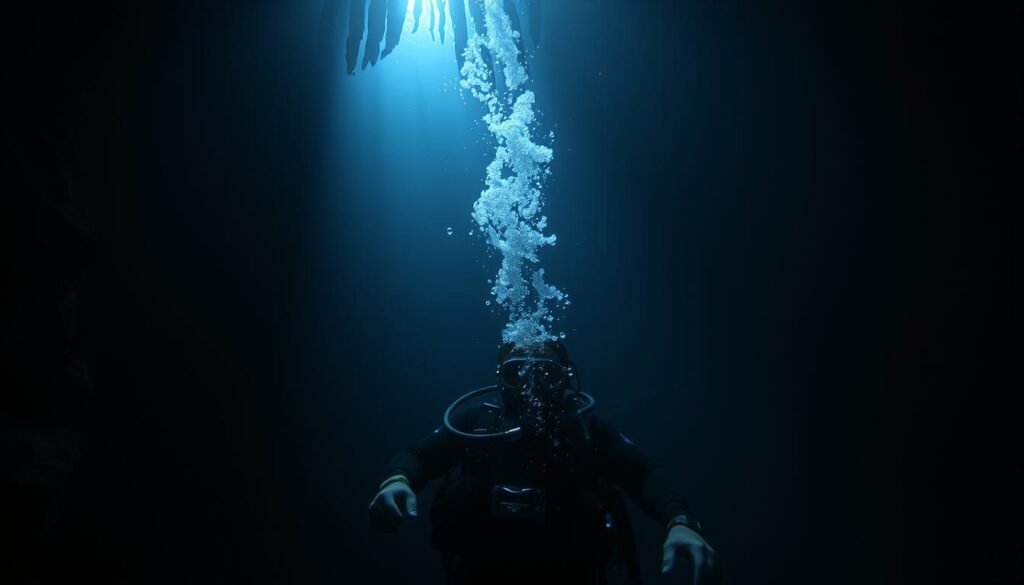
Emergency Procedures and First Aid
Emergency Response Plans
Having a solid emergency response plan is crucial for any cave diving expedition. I remember a dive where we encountered unexpected strong currents, and having a pre-planned response saved us from panic. Develop and understand dive-specific emergency protocols, such as how to handle equipment failures or lost buddies.
Make sure everyone in your team knows their role in an emergency and has practiced the plan beforehand. This preparedness can make the difference between a minor hiccup and a serious incident, ensuring you can respond swiftly and effectively when things go wrong.
First Aid Training
Essential first aid skills are a must for cave divers. I once had a buddy who got a minor cut from sharp rocks, and knowing how to treat it underwater was a lifesaver. Enroll in a first aid course that covers dive-specific scenarios, such as treating decompression sickness or managing hypothermia.
Being prepared to administer first aid can help stabilize an injured diver until professional medical help arrives. Always carry a well-stocked first aid kit and ensure everyone in your dive group knows basic first aid procedures. It’s all about being ready to handle any situation calmly and competently.
Rescue Techniques
Effective rescue techniques are vital for assisting fellow divers in distress. I participated in a training session where we practiced retrieving a stuck diver, and it was eye-opening. Learn and practice various rescue methods, such as buddy breathing, towing, and establishing safety stops.
Understanding how to perform these techniques under pressure can save a life in an emergency. Regularly drill these skills with your dive team to ensure everyone is comfortable and confident in executing a rescue if needed. Remember, the key to a successful rescue is staying calm and working together efficiently.
Communication in Emergencies
Maintaining clear communication during critical situations is essential for coordinating rescue efforts. I’ve been in dives where confusion and miscommunication could’ve led to bigger problems. Use standardized hand signals and pre-arranged codes to convey important information quickly.
Equip yourself with reliable communication devices, like underwater radios or signaling lights, to enhance your ability to communicate in low-visibility environments. Clear and effective communication ensures that everyone knows what’s happening and can act accordingly, minimizing the risk of mistakes during an emergency.
Choosing the Right Cave Diving Guide or Operator
Reputation and Reviews
Choosing a good diving operator is key for a safe and fun cave diving trip. I read many reviews and talked to other divers before picking a guide for my first dive in Mexico. Look for operators with good feedback, strong safety records, and experienced staff.
Don’t be shy to ask for references or check online reviews. A reputable operator will focus on your safety, provide top-notch equipment, and have knowledgeable guides. They will make your diving experience better with their expertise.
Safety Standards
It’s crucial that the operator follows strict safety rules. I’ve seen some operators skip safety measures, which is not worth the risk.
Conclusion
Cave diving in Mexico is an exciting mix of adventure and nature’s secrets. To have a safe and memorable dive, follow these safety tips. Preparation and respect for nature are crucial for a safe dive.
Are you ready to see Mexico’s beautiful underwater caves? Begin your adventure with the right knowledge and equipment. Dive into the unknown with confidence!

